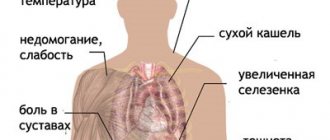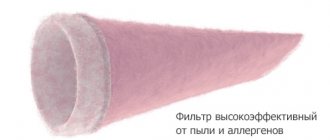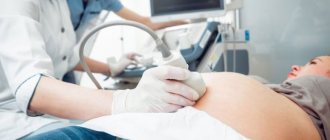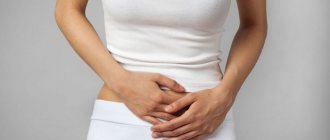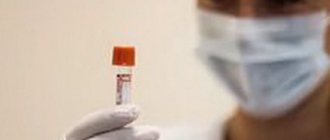The symptoms and treatment of mastitis are inextricably linked. Timely identification of signs will allow you to quickly identify and eliminate the inflammatory disease occurring in the breast tissue. In case of late consultation with a doctor and improper therapy, purulent mastitis may develop, requiring surgical intervention. Therefore, it is important to know the first signs and symptoms of the disease, the causes of its occurrence, in order to prevent serious consequences.
Causes of mastitis
In most cases, mastitis in women is provoked by a staphylococcal infection, which enters the ducts of the mammary glands and actively develops there. The most common causes of mastitis are the following:
- of chronic diseases in the body , including infections of the respiratory tract, reproductive system, etc.;
- Acute intestinal infections , when the stick enters the mammary glands through the circulatory system;
- Cracked nipples . Even microscopic lesions are vulnerable to infection;
- Lactostasis . Stagnation of milk in the gland encourages the proliferation of pathogenic organisms;
- Weakened immunity caused by recent childbirth or the presence of concomitant diseases;
- Failure to comply with basic hygiene rules.
If you have one of the listed factors, you need to pay special attention to your health and conduct regular breast examinations. To reduce the likelihood of mastitis, you should exclude its possible causes.
Questions and answers about the treatment of mastitis and lactostasis
Question: I'm going to breastfeed. My first daughter did not breastfeed. How can you understand that your milk duct is clogged? Kh.Sh., Grozny. Answer: Symptoms of lactostasis (milk stagnation) are engorgement (increase in volume, filling) of the mammary gland, increased temperature of the mammary gland and painful sensations. It is at this moment that proper straining is necessary to avoid the formation of mastitis .
Women from Grozny, Argun, Gudermes, Urus-Martan, Shali, Achkhoy-Martan, Bamut, Orekhovo, Dolinsky, Gikalovsky, Komsomolsky, Krasnostepnovsky, Pervomaisky, Raduzhny, Sadovoye, Vinogradny, Bragun, Novogroznensky, Chkalovo, Krasnaya Gorka come to us for mastitis treatment , Yuzhny, Bratsk, Kalaus, Znamensky, Levoberezhny, Obilny, Savelyevskaya, Guli, Lyazhgi, Olgeti, Dzhugurta, Shatoya, Shelkovskaya and other settlements of the Chechen Republic.
Question: Milk stagnation, what should I do? I can't pump my breasts with a breast pump. How to properly drain your breasts and prevent mastitis from occurring? N.I., Pyatigorsk. Answer: A vacuum breast pump expresses milk from the milk lobes close to the nipple, without emptying the lobes distant from the nipple. Full pumping cannot be achieved with a vacuum breast pump. You can pump your breasts at the Women's Health Resort Clinic using professional ultrasonic pumping devices.
For treatment of mastitis, treatment of lactostasis, women from Pyatigorsk, Lermontov, Mineralnye Vody, Kislovodsk, Zheleznovodsk, Essentuki, Novoaleksandrovsk, Novopavlovsk, Mikhailovsk, Svetlograd, Nevinnomyssk and other cities of the Stavropol Territory come to us.
| ONLINE mammologist information about the treatment of mastitis in Pyatigorsk can be found at: REGISTER ONLINE for mastitis treatment here. REGISTER online for the treatment of lactostasis here. |
Make an appointment with a mammologist
Question: A mammologist in Nalchik discovered lactation mastitis in me. Temperature 38.8-39.3ºС, does not drop. The breasts are not very hard, but pus comes out of one hole in the nipple instead of milk. Tell me, is it necessary to open this? Here in Nalchik they insist on surgery. I would like to hear the opinion of a good mammologist in Pyatigorsk. G.Zh., Nalchik. Answer: To avoid surgical treatment of mastitis, it is important to fully drain the mammary gland as early as possible. We are ready to help you preserve your breasts WITHOUT SURGERY.
Women from Nalchik, Prokhladny, Baksan, Maisky, Tyrnyauz, Terek, Chegem, Khasanya, Adiyukh, Belaya Rechka, Atazhukino, Zhankhoteko, Zayukovo, Islamey, Kuba, Belokamenskoye, Zolsky, Malki, Prirechny, Oktyabrsky, Elbrus, Tyrnyauz come to us for treatment of mastitis. , Kashkhatau, Nartkaly, Anzorey, Zalukokoazhe and other settlements of the Kabardino-Balkarian Republic.
Question: A mammologist in Makhachkala diagnosed me with chronic mastitis. I was treated with antibiotics, but it didn’t help. I would like to get an appointment with a mammologist in Pyatigorsk at your Mammology Clinic. H.A., Makhachkala. Answer: Treatment of mastitis and consultation with a mammologist in Pyatigorsk at the Women's Health Clinic seven days a week, tel. 8.
Women from Makhachkala, Derbent, Dagestan Lights, Buinaksk, Kizlyar, Izberbash, Karata, Khasavyurt, Kizilyurt, Yuzhno-Sukhumsk, Kaspiysk, Leninkent, Semender, Novy Khushet, Bavtugay, Dubkov, Novy Sulak, Komsomolsky, Tserkhimakhov, Lutkun come to us for mastitis treatment , Hamamatyurt, Botlikh, Verkhniy Kazanishche, Karamakhov, Gergebil, Maali, Mekhelta, Kuli and other settlements of the Republic of Dagestan.
Question: We need a good mammologist. My daughter has stagnation of milk in her breasts. What to do? Z.V., Mineralnye Vody. Answer: A good mammologist in Pyatigorsk at the Women's Health Clinic accepts all days of the week by appointment, tel. 8 (800) 500-52-74.
Question: What documents are needed to treat mastitis? A.N., Essentuki. Answer: It is advisable to have copies of the results of a previously conducted clinical and laboratory examination with you. If necessary or desired, it is possible to perform a clinical and laboratory examination in our Clinic.
Question: Is it possible to issue a sick leave certificate at the Clinic for the period of mastitis treatment? E.K., Kislovodsk. Answer: At the Women's Health Resort Clinic, sick leave (sick leave) is not issued.
Question: Do you provide documents to obtain a tax deduction for the treatment of lactostasis and mastitis? A.Ya., Pyatigorsk. Answer: The resort clinic for women's health provides documents to obtain a tax deduction for the treatment of lactostasis and mastitis (13% tax refund).
We work seven days a week and on holidays:
Monday - Friday from 8.00 to 20.00, Saturday, Sunday, holidays from 8.00 to 17.00.
Treatment of mastitis and appointment with a breastfeeding specialist by appointment by multi-channel telephone (calls within Russia are free), or +7 (928) 022-05-32, or
| ONLINE mammologist information about the treatment of mastitis in Pyatigorsk can be found at: REGISTER ONLINE for mastitis treatment here. REGISTER online for the treatment of lactostasis here. |
Make an appointment with a mammologist
Mastitis in nursing women
Most often, breastfeeding women suffer from mastitis. Refusal to breastfeed or irregular pumping causes stagnation of milk in the glands. As a result, a favorable environment for the proliferation of microorganisms is created.
The first signs of mastitis may appear as early as the second week of breastfeeding or during weaning. However, mastitis in a nursing woman also occurs at other stages. Milk is rich in nutrients, making the infection develop very quickly. Even short-term disruptions in feeding the baby and expressing milk can cause mastitis.
Read more: Symptoms of mastitis in a nursing mother.
What is lactation mastitis?
Mastitis (lat. - mastitis) is inflammation of the breast tissue.
All mastitis is divided into lactational and non-lactational. The differences between them in terms of the origin of the disease, age and gender of patients, and frequency of occurrence are shown in the table.
| Index | Mastitis | |
| Lactation | Non-lactational | |
| Causes | Associated with lactation and breastfeeding | Associated with hormonal imbalance in the internal environment of the body. |
| Case population | Nursing mothers | Men, women, children at any age |
| Frequency of occurrence * | 80-85%. Of these, 70% are in women who gave birth for the first time. After the second and especially the third birth, the likelihood of developing lactation mastitis decreases. | 15-20% of all cases of inflammation of the mammary glands |
*According to L.N. Bisenkova and employees., 2014.
Causes of breast inflammation in women
The cause of lactation mastitis is pathogenic microflora. In each specific case, there may be one pathogen (usually staphylococcus) or several, when staphylococcus, E. coli, Proteus, streptococcus, bacteroids (mixed infections) act simultaneously.
All of the listed microorganisms are pathogenic agents, and not opportunistic microflora. They exist in the environment and can end up on the skin, which is why hygiene procedures are so important when bacteria are mechanically washed off from its surface. Intact skin is a closed barrier for microbes, through which they cannot enter the body. The situation changes with any violation of the integrity of the skin (wounds, scratches, cracks, etc.), when an entrance gate appears for infectious agents, through which microbial aggression is carried out into the internal environment.
When breast tissue is infected, the entrance gate for microorganisms becomes the milk ducts at the top of the nipple and then the pathogens spread through the milk ducts deep into the breast tissue. In addition, the entry of microorganisms is possible through cracks in the nipple.
The introduction of pathogens and their reproduction to a critical mass is facilitated by a decrease in the body's defenses, which can occur as a result of previous diseases or problems during pregnancy, childbirth and after childbirth. Rare at present will be such conducive conditions as a low standard of living, malnutrition, poor living conditions, etc.
In primiparous women, a contributing factor may be the lack of development of the milk ducts in the first days of lactation and breastfeeding, when the outflow paths are too narrow compared to the volume of fluid to be excreted. At the same time, on these same days, the resulting colostrum (the first day) and intermediate milk (up to the third or fourth day) have a greater density and viscosity compared to mature milk. Therefore, the rate of outflow of colostrum and intermediate milk is low; they may even be delayed and accumulated in the excretory tract. In such cases, they talk about lactostasis - stagnation of milk in the mammary gland.
In itself, lactostasis is not a disease. But it must be eliminated for further successful breastfeeding. The best way to do this is not to stop feeding, because... a hungry baby, while sucking, will empty the breast and use up the entire supply of milk. Pumping, massage, and physiotherapy are also very effective. Physiotherapy for lactostasis and its prevention are carried out using the phonation method using the Vitafon apparatus.
You can read a detailed story about lactostasis, methods of its elimination and prevention, including a detailed description of pumping and massage techniques here.
But, nevertheless, lactostasis remains only lactostasis and is not a disease until infection of the stagnant milk and adjacent breast tissue occurs. From this point on, we can talk about inflammation of the mammary gland in women - lactation mastitis.
During mastitis, three stages are distinguished - serous (serous mastitis), infiltrative and purulent.
Each stage is regarded as an independent form of lactation mastitis.
If inflammation of the mammary gland in a nursing mother is at the serous stage of development, then a diagnosis of “Acute serous mastitis” will be made.
The infiltrative and purulent stages of the disease in the medical history will be designated as “Acute infiltrative mastitis” and “Acute destructive mastitis.” In the latter case, the name comes from the word “destruction” - destruction, because During the purulent stage, melting of the tissue structures of the mammary gland occurs.
Mechanisms of development of lactation mastitis
Serous stage or serous mastitis.
After infection, pathogens located in the tissues of the gland begin to multiply, especially since stagnant milk is an excellent nutrient medium for this. At the same time, they release their waste products, which are toxic to the body. The first symptoms appear - malaise, weakness.
In response to the introduction of infectious agents, the immune system is activated and its effector cells, leukocytes, whose task is to destroy pathogens, enter and accumulate at the site of inflammation. All this is accompanied by dilation of microvessels, the transition of the liquid part of the blood into the tissue and the formation of edema.
Stagnant milk, accumulation of microorganisms and leukocytes, dilated microvessels, edematous fluid - all this together forms a focus of inflammation, the local signs of which are swelling (hardening), local increase in temperature, redness, pain, dysfunction. Local manifestations are accompanied by general ones - increasing malaise and weakness, fever, changes in the cellular composition of the blood (reflected in a general blood test).
If treatment is insufficient or absent altogether, the serous stage can transform into infiltrative and purulent.
Infiltrative stage or acute infiltrative mastitis.
As the disease progresses, the composition of the inflammatory fluid changes. At first it is a serous fluid - transparent with a small amount of leukocytes and protein. Then many dead leukocytes, decay products of tissues and protein molecules appear in it. Now it is a viscous yellow liquid - pus, which is actively spreading, penetrating into neighboring, previously undamaged structures.
The process of spread is called infiltration, hence the name of the stage - infiltrative, as well as the form of the disease - acute infiltrative mastitis.
A contributing factor to infiltration is the structural features of the mammary gland, in the tissues of which there are no dense connective tissue partitions between its individual parts. Therefore, the spread of purulent inflammation of the mammary gland occurs quite quickly.
Infiltration into previously healthy tissues leads to the formation of accumulations of pus. From this moment on, they talk about the purulent stage of postpartum mastitis - acute destructive mastitis.
Purulent stage or acute destructive mastitis.
Infiltration into previously healthy tissues leads to the formation of accumulations of pus, which can be in the form of abscesses or phlegmons.
An abscess is an abscess enclosed in a capsule. There may be different locations of abscesses (purulent inflammation of tissues) - in the area around the nipple, under the skin, in the thickness of the mammary gland (intramammary form), behind the gland (retromammary form). If the abscess is not delimited by a capsule from healthy tissue, then it is phlegmon.
The purulent stage or acute destructive mastitis is much more severe than the serous and infiltrative form, requires surgical removal of accumulations of pus, and is dangerous due to the spread of infection beyond the affected breast, up to the development of blood poisoning.
Mechanism of disease development
Pathogenic microorganisms enter the woman’s mammary gland through blood or microcracks in the nipples. After this, the pathogens begin to actively multiply and secrete waste products that have a detrimental effect on the human body. As a result, the first symptoms of mastitis appear in the form of fever and general malaise.
The immune system responds to the inflammatory process by producing white blood cells designed to suppress the source of infection. This is accompanied by dilation of blood vessels and the appearance of characteristic signs of mastitis.
How does the disease begin?
Mastitis develops after infection enters through the nipple opening. As a result of infection, pathogenic microorganisms settle on the wall of the duct. When milk stagnates, favorable conditions are created for the reproduction and growth of colonies, which gradually causes the death of gland cells.
The disease goes through three stages:
- Serous-infiltrative – acute mastitis begins with it. The affected tissues swell, and there is an accumulation of leukocytes - protective cells for destroying microbes. All pathological processes at this stage are still reversible.
- Stage of phlegmon - if the pathogen is not destroyed, the colonies infect new tissues, causing the death of entire areas. There is limited accumulation of pus.
- Gangrene develops if left untreated. It is characterized by blockage of large vessels with blood clots or their compression by growing purulent foci. Due to poor circulation, most of the gland dies.
Stages
Mastitis is divided into several stages, which are characterized by certain symptoms and signs. The main classification of mastitis is as follows:
- Serous is the initial stage of the disease, which responds well to treatment. At this stage, it is important to recognize the first symptoms: a slight inflammation forms, without visible changes on the skin. In this case, there is an enlargement of the mammary gland, pain and an increase in temperature.
- Infiltrative - occurs two days after the lack of proper treatment for serous mastitis. The area of inflammation increases, and upon palpation you can feel a pronounced compaction (infiltrate).
- Purulent - at this stage, purulent formations appear, causing a significant increase in temperature to 40 degrees and a sharp deterioration in well-being. The breasts become swollen, and the skin in the area of the mammary gland changes color.
- Chronic – occurs due to improper treatment or lack thereof. In most cases, this is untreated mastitis of the mammary gland, which subsequently responds poorly to therapy.
In addition to those described, there are also several other classifications of mastitis:
- Abscess – characterized by the presence of a purulent formation that is localized in a certain area and does not extend beyond its limits.
- Phlegmonous is one of the advanced forms of purulent mastitis, when inflammation spreads throughout the mammary gland.
- Gangrenous – a severe stage at which tissue necrosis occurs. The woman feels a sharp deterioration in her health, and her body temperature can rise above forty degrees. These symptoms require immediate hospitalization.
It is worth noting that mastitis in a nursing mother develops very intensively. In just a few hours, the disease can progress to the next stage. Therefore, when the first symptoms appear, you need to contact a clinic where professional help will be provided.
How to prevent it?
The main task of prevention is to ensure the natural drainage function of the mammary gland - this will prevent stagnation of milk and create a favorable emotional background. We list the basic rules that must be followed to prevent the development of mastitis:
- Immediately after birth you need to breastfeed - it is advisable to do this in the first 30 minutes. In the future, feeding should be continued, strictly observing the daily routine.
- Always express the remaining milk - place your fingers around the periphery of the areola, do not pull on the breast or pinch the skin. Alternate these movements with a light massage.
- Wear only a loose bra made from natural fabrics - the seams should not dig into the skin. If there is discharge from their nipple, use special wipes.
- Do a light breast massage every day - gently, in a circular motion. The procedure should last 5-10 minutes.
- If sores appear on the nipple, you should immediately consult a doctor. The doctor will prescribe medications for healing and special creams.
The best prevention is timely attendance at antenatal clinics and breast care. If you adhere to all of the above rules, the likelihood of developing pathology is very low. When symptoms of mastitis appear, urgent conservative therapy is required.
Symptoms of mastitis
Unlike many diseases, mastitis is characterized by the appearance of pronounced symptoms even at an early stage. This allows you to consult a doctor in a timely manner and undergo a course of therapy to prevent further development of the infection. Among the main symptoms are:
- pain in the affected area;
- increase in breast size;
- breast lump;
- malaise and weakness;
- headache;
- increased body temperature;
- change in skin color in the breast area;
- deterioration of milk flow;
- swelling of the skin of the breast;
Each stage of the disease is characterized by certain signs of mastitis. At the initial stage, thickening of the mammary gland and an increase in body temperature appear. These symptoms are enough to suspect the disease and undergo a professional examination to make an accurate diagnosis.
Leading specialists in the treatment of mastitis in the Southern Federal District
Ermolaeva Elvira Kadirovna is a well-known and recognized specialist in the treatment of mastitis in the North Caucasus. A physiotherapist-resortologist, an experienced ultrasound doctor, a breastfeeding specialist. Women who are tired of pain in the mammary glands turn to her.
Ermolaev Oleg Yurievich Candidate of Medical Sciences, gynecologist-endocrinologist, ultrasound doctor, physiotherapist-resortologist with 25 years of successful experience in treating advanced forms of mastitis. He specialized in mammology in 1993 at the Moscow Mammology Dispensary.
Shchepkin Petr Sergeevich Gynecologist, breastfeeding specialist. Experienced breast ultrasound doctor.
About the doctors of the Clinic in detail...
| INTERNATIONAL RECOGNITION of the reputation and achievements of the Women's Health Resort Clinic in the development and implementation of effective and safe treatment methods and the quality of medical services provided is the AWARDING of the Women's Health Resort Clinic in Pyatigorsk with the SIQS International QUALITY CERTIFICATE in the field of medicine and healthcare. International Socratic Committee, Oxford, UK and Swiss Institute for Quality Standards, Zurich, SWITZERLAND. |
We work seven days a week and on holidays:
Monday - Friday from 8.00 to 20.00, Saturday, Sunday, holidays from 8.00 to 17.00.
Treatment of mastitis and appointment with a breastfeeding specialist by appointment by multi-channel telephone (calls within Russia are free), or +7 (928) 022-05-32, or
The cost of an initial consultation with a specialist to identify breast diseases is 2,300 rubles.
The cost of a repeated consultation with a specialist to identify breast diseases is 1,250 rubles.
Ultrasound of the mammary glands with regional lymph nodes - 1650 rubles.
3D/4D ultrasound of the mammary glands with regional lymph nodes - 3150 rubles.
The price of CA 153 is 580 rubles.
Expressing one breast for lactostasis (one procedure) - 750 rubles.
Visit to the home of a midwife/nurse within the city of Pyatigorsk (without the cost of services) - 3,000 rubles.
| ONLINE mammologist information about the treatment of mastitis in Pyatigorsk can be found at: REGISTER ONLINE for the treatment of lactostasis here. REGISTER online for mastitis treatment here. |
Make an appointment with a mammologist
Clinical case 1
to the Women's Health Resort Clinic with complaints of an increase in body temperature to 39.3°C, severe arching pain, difficulty expressing milk and redness of the left breast (photo 1).
Pain and fever up to 38.9°C occurred in the evening of the previous day after insufficient emptying of the left breast during breastfeeding.
Childbirth 20 days ago, breastfeeding. On examination, the condition is of moderate severity: movements and speech are sluggish, the forehead is covered with perspiration, the skin is pale, the pulse is 102 beats/min (frequent), the temperature in the left axilla is 39.8°C. The left mammary gland is hyperemic (reddened) in the inner quadrants, tense, touching it is sharply painful. Enlarged, painful lymph nodes along the left anterior axillary line are palpated (determined by touch).
Ultrasound mammography revealed expansion and blockage of the milk passages (ducts), tight filling of the milk lobes and the presence of small foci of purulent melting (necrosis) of tissue.
An urgent blood test revealed indicators of a systemic inflammatory process (significant increase in leukocytes, ESR 40 mm/hour!).
Based on complaints, examination data, ultrasound mammography and blood tests, a diagnosis of “ Acute left-sided lactation infiltrative mastitis ” was established. At the consultation, it was decided to try to maintain lactation and drain the mammary gland.
The complexity of the situation lies in the rapidity and unpredictability of the development of lactation mastitis. Within 12-24 hours without taking antibiotics, purulent tissue melting may occur. The infection and decomposition products (toxins) will begin to be absorbed and enter the bloodstream. Sepsis will occur, “puerperal fever” - a life-threatening condition. On the other hand, taking antibiotics will not allow you to feed your baby with a healthy breast. It is very difficult to maintain a balance and avoid surgical treatment.
For 1.5 hours, 2 Clinic midwives alternated pumping and performing sonophoresis with Vaseline. Ultrasound emulsifies fats, making the milk homogeneous and frees the ducts (milky passages) from fat droplets. For anti-inflammatory purposes, laser blood treatment, homeopathic remedies and infusions of medicinal plants were prescribed every 30 minutes. After 40 minutes of active pumping, a thick yellow-green mass began to emerge from the left nipple.
Microscopic examination of the discharge from the left nipple revealed a large number of neutrophils (white blood cells), droplets of fat and destroyed red blood cells (red blood cells). With the discharge of pus, the body temperature dropped to 37.3°C, and the subjective state improved significantly.
Straining and physiotherapy were carried out 2 times a day for 2 days. All this time, the patient fed the baby with her right breast and carefully took the prescribed treatment.
During a follow-up examination 2 days later, the condition was satisfactory, body temperature was 36.6°C, the mammary glands were of the same size and shape, thickened due to the flow of milk, expressing was not difficult. Nipples are healthy. Recommendations for rational feeding are given. The woman was discharged after recovery.
| Photo 1 | Photo 2 |
Clinical case 2
A 52-year-old woman came to the Women's Health Resort Clinic with complaints of redness and stabbing pain in the right breast for 3 days. The appearance of pain was preceded by weakness, lethargy, chills and an increase in body temperature to 38°C in the evening (photo 2).
A stabbing pain in the right mammary gland arose unexpectedly in the morning. During the morning toilet, the woman discovered local redness of the right breast 3 cm in diameter with a clear contour without involving the areola.
She independently took antipyretics (Panadol, indomethacin) and applied an alcohol compress to her chest 3 times. Due to the lack of improvement in the subjective condition and a noticeable increase in the size of the redness, the local gynecologist referred her to the Women's Health Resort Clinic.
History of 2 births, 5 abortions (last in 2005). Duration of breastfeeding is 12 and 9 months. Denies injury (bruise) to the mammary gland.
On examination, the regional lymph nodes are not enlarged, the mammary glands are of the same size and shape. Noteworthy is a bright red spot in the inner quadrants of the right breast involving the areola, with a clear, sometimes fuzzy outline. The skin temperature in the area of the hyperemic (reddened) area is higher than in the symmetrical area of the left breast.
On palpation, severe skin soreness and diffuse (without nodes) engorgement of the area are noted. Ultrasound mammography revealed local thickening and swelling of the skin, subcutaneous fat and glandular tissue in the area of the hyperemic area of the right breast.
A clinical blood test showed a moderate increase in leukocytes with the correct blood count.
Based on complaints, examination data, blood tests and ultrasound examination, a diagnosis of “Erysipelas of the right mammary gland” was established. The cause of erysipelas (erysipelas) is a streptococcal infection that spreads through the subcutaneous fat. Taking antibiotics and applying ointments only worsens the process. In modern medicine, the same treatment methods are adopted as in the time of Hippocrates: wrapping the affected area with a red calico rag; those. Following the principle of homeopathy - like is cured by like.
At the Women's Health Resort Clinic, a course of magnetic laser therapy with a red laser using the sliding technique was conducted. Starting from the 3rd procedure, there was a clear decrease in pain, swelling and the size of the area of redness, and normalization of well-being. Complete relief (disappearance) of complaints and symptoms was observed on the 7th day of treatment. The patient was discharged in satisfactory condition.
| ONLINE mammologist information about the treatment of mastitis in Pyatigorsk can be found at: REGISTER ONLINE for mastitis treatment here. REGISTER online for the treatment of lactostasis here. |
Make an appointment with a mammologist
Diagnostics
Diagnostics plays an important role, since timely identification of the problem will allow for effective therapy and quickly eliminate the inflammatory process. The patient must carry out the initial diagnosis independently. This will allow you to identify the first symptoms of mastitis, suspect the presence of the disease and seek help from specialists.
When visiting a doctor, an examination is carried out and complaints are identified. The specialist palpates the breast, which allows you to make a diagnosis and determine a list of further examinations to determine effective treatment tactics.
Depending on the situation, the patient may be prescribed the following tests:
- general blood analysis;
- discharge from the nipples, to identify the causative agent of infection and sensitivity to antibiotics;
- examination of milk for the presence of bacteria and leukocyte levels.
To accurately determine the location of inflammation, as well as its extent, an ultrasound examination is performed. If the clinical picture is questionable, a biopsy is prescribed to rule out the possibility of cancer. The list of studies may vary and depend on factors such as the presence of concomitant diseases, the stage of mastitis, and so on.
What are the different forms of mastitis?
There are several classifications; when making a diagnosis, the doctor identifies the type of pathology depending on the conditions of its occurrence. This gradation includes two forms of mastitis:
- Non-lactational – rare and not associated with breastfeeding. Usually it is predisposed to injury, hypothermia, and infection entering the gland through the blood or lymph.
- Lactation - most diseases are represented by this form. It develops after childbirth, is acute and requires immediate treatment.
The doctor indicates the type of mastitis in the medical history. This classification is paid attention to when prescribing therapy. If a non-lactational form is diagnosed, testing may be expanded to look for the cause.
According to the clinic, several types of mastitis are distinguished:
- infiltrative - when swelling of local tissues is noted, compactions appear;
- serous - with this form, fluid accumulates in the intercellular space, symptoms are moderate;
- abscess – characterized by limited purulent inflammation;
- phlegmonous – a diffuse purulent area is observed;
- gangrenous – accompanied by the death of glandular tissue;
- chronic infiltrative mastitis - accompanied only by local symptoms.
There is also a classification according to the prevalence of pathological changes - mastitis can be superficial and deep. The latter is divided into several forms, the most dangerous is panmastitis, in which the entire area of the gland is inflamed. When making a diagnosis, the classification of pathology is written in detail.
Treatment of mastitis
Treatment methods depend entirely on the stage of mastitis and the woman’s health condition. It is worth noting that mastitis progresses very quickly and requires qualified treatment. Trying to cope with the disease on your own can lead to serious consequences.
The initial stage of the disease allows you to achieve high results using conservative treatment methods. These include taking anti-inflammatory medications and regularly expressing breast milk (in the case of lactation mastitis). In case of weakened immunity, the doctor prescribes antibiotics. During this period, it is recommended to stop breastfeeding, as taking medications can affect the composition of milk.
To minimize the likelihood of relapse, during the treatment period it is necessary to eliminate the factors that led to the development of mastitis. For example, ensure regular expression of milk.
Treatment of mastitis in women should be carried out under the supervision of specialists. In the absence of a positive result and the formation of suppuration, surgical intervention will be required. Removal of an abscess can be carried out by puncture or opening with subsequent drainage.
After the operation, a course of antibacterial therapy and painkillers is prescribed. If the disease occurred during lactation, then breastfeeding can be resumed only after stopping the medication and complete recovery. To ensure the effectiveness of the therapy, the patient is scheduled to undergo repeated tests.
Read more: Treatment of mastitis in a nursing mother.
How to treat?
Treatment for mastitis requires mandatory cessation of breastfeeding, since Staphylococcus aureus can cause dangerous diseases in the child. You also need to remember that any medicine penetrates the glandular tissue, and then into the milk.
At the initial stages, conservative therapy is prescribed. It includes:
- Drugs to reduce lactation (Dostinex, Bromocriptine) are prescribed by a doctor to relieve the strain on the mammary gland. When taking them, breastfeeding is strictly prohibited.
- Expressing breast milk - done 4-5 times a day, the procedure begins with the sore breast. For severe pain, a novocaine blockade is first done.
- Analgesics (Nise, Ibuprofen) or antispasmodics (Papaverine, No-Shpa) are prescribed for severe local symptoms. Medicines help cope with the manifestations of pathology.
- Antibiotics for mastitis (Clarithromycin, Erythromycin) are prescribed by a doctor when Staphylococcus aureus is detected. Taken in courses along with painkillers.
In case of phlegmonous form or in the presence of an abscess, surgery is prescribed. During surgery, purulent foci are opened, drainage of the contents is performed, followed by disinfection. In case of gangrene, the entire gland must be removed. After the intervention, a course of antibiotics is indicated.
Recommendations
Breast mastitis requires immediate action and adequate treatment. To achieve a speedy recovery and not harm your health, you need to adhere to the following recommendations:
- Treatment of mastitis should be trusted only to qualified specialists. Independent actions can lead to negative consequences and the transition of the disease to a more complex stage.
- To achieve effective results, you cannot ignore the recommendations of your doctor.
- When identifying the first signs of mastitis, you need to refrain from thermal procedures and regularly express milk.
Only professional treatment of mastitis will help get rid of the inflammatory process and avoid its reappearance.
How to diagnose?
Breast cancer can mimic the symptoms of mastitis. To exclude oncology and confirm the disease, an examination is required.
It includes:
- Ultrasound – allows you to detect a lesion in the mammary gland, determine its size and shape;
- microscopy of milk - with mastitis, a microbial pathogen, remains of pus and leukocytes will be detected;
- A blood test will show an increase in ESR and a shift of the formula to the left, which indicates inflammation.
A biopsy will show the final point in diagnosis - but it is not always prescribed when previous methods do not allow a differential diagnosis.
Prevention
It is almost impossible to completely exclude the possibility of the disease. However, you can reduce it to a minimum. To do this, it is enough to carry out a number of preventive measures:
- It is necessary to breastfeed regularly, as well as express the remaining milk after each procedure.
- When feeding, you need to properly attach the baby to the breast. The baby should be able to grasp the entire areola. This prevents damage to the delicate skin of the nipples.
- Timely treatment of inflammatory processes occurring in the body also reduces the chances of mastitis.
- Before and after each feeding, you need to prepare your breasts. The nipples are washed with warm water and then gently wiped with a clean towel.
Preventive measures also include self-examination of the mammary glands and regular visits to a specialist.
Treatment of inflammation of the mammary glands in women
When planning treatment measures, the doctor is primarily guided by the following mandatory rule: acute serous and infiltrative mastitis are treated conservatively (i.e., without surgical intervention), and purulent and purulent-destructive forms are treated surgically.
Effective conservative treatment of serous mastitis must be timely, rational and comprehensive.
The complex of treatment measures includes bed rest, frequent pumping, continued breastfeeding and mandatory physiotherapeutic procedures.
- Bed rest. This means that a woman with lactation serous mastitis is allowed to sit up in bed and turn around, but toileting and eating is possible only with the help of caregivers. We draw your attention to the fact that independently visiting the toilet, walking around the room (ward), eating at the table is ward rest, but not bed rest, which is prescribed. This increased attention to the regimen is due to the fact that serous mastitis is an active infectious process that can be complicated by cardiovascular disorders. Bed rest limits stress and prevents such disorders.
- Wearing underwear that does not compress the chest, because... Compression of the breast tissue by a tight bra interferes with the outflow of milk from it.
- Frequent expression of milk from the affected mammary gland is a mandatory requirement, because, firstly, stagnant milk curdles and begins to ferment, and this is an excellent breeding ground for pathogens of postpartum mastitis; secondly, accumulations of milk compress neighboring milk ducts, blood vessels and gland tissue. To eliminate stagnation of milk, the Vitafon device (see below) is very effective, which allows you to quickly express milk and eliminate disturbances in the outflow tract (from the review of the D.O. Ott Research Institute of Obstetrics and Gynecology of the Russian Academy of Medical Sciences (St. Petersburg, 1997)).
- Breastfeeding in conditions of serous inflammation of the mammary gland continues. Serous mastitis is not a contraindication for this. On the contrary, when the baby sucks, he quickly eliminates milk retention and completely empties the breast.
- Reducing the intensity of milk production to “unload” congestion. For this purpose, it is recommended to slightly reduce the amount of liquid you drink per day.
- Physiotherapy with the Vitafon apparatus is aimed at accelerating the cleansing of tissue from damaged cells, decay products and vital activity; improving cell nutrition, better penetration of immune cells, their contacts with infection. By accelerating all these processes, swelling and inflammation are relieved more quickly. “Vitafon”, unlike medications that inhibit, block and reduce inflammatory reactions (edema), helps the body quickly solve the problem of recovery and, thus, swelling and inflammation go away on its own, but only faster than usual. As a result, it is the most natural way for the body to heal.
The Vitafon device can also be used at home. In this case, the inflammation site is exposed to microvibrations - modulated low-intensity mechanical vibrations in the acoustic frequency range. What explains the therapeutic effect of vibroacoustic therapy?
- Lactostasis and the inflammatory process are friendly phenomena. The first of them can cause the second and vice versa. Moreover, milk retention and the inflammatory response always mutually reinforce each other.
- Stagnation is always associated with the presence of an obstacle to the outflow: compression of the ducts, their relative narrowness in combination with a large volume of milk and its increased viscosity. Compressive factors can be neighboring ducts overflowing with milk, vessels dilated due to stagnation of blood and lymph, and edematous fluid. Stagnation of blood and lymph, vasodilation, swelling - these are indispensable components of the inflammatory reaction.
- The milk accumulated in the outflow tract begins to curdle and ferment. The products of these processes are toxic to the body and must be removed from the internal environment. The biological role of the inflammatory response is precisely to remove such objects. Therefore, in response to the curdling and fermentation of milk, a focus of inflammation is necessarily formed. The resulting vasodilation and swelling further disrupts the outflow of milk. With lactation mastitis, the inflammatory reaction appears and/or intensifies due to the appearance of another object for removal - the pathogen.
- In order to stop this process, it is necessary to eliminate the compressive factor, i.e. restore the patency of the milk ducts, as well as blood and lymphatic vessels. Due to this, swelling will also be eliminated.
- The movement of blood through the vessels occurs as a result of pulsating contractions of the vascular walls. Lymphatic vessels do not have independent pulsation, but are located next to blood vessels, contractions of the walls of which also move the flow of lymph. At the site of inflammation, the walls of blood vessels are relaxed and incapable of pulsation.
Created by the Vitafon apparatus, low-frequency mechanical vibrations (microvibration) restore the contractility and permeability of vascular walls, normalize the transit of blood and lymph through them, stop the transition of the liquid part of the blood into the tissue, and ensure the removal of edematous fluid through the lymphatic system. In addition, microvibrations restore the tone of muscle cells in the breast tissue, due to the contractions of which milk normally moves through the ducts to the nipple.- In addition, the use of the Vitafon device normalizes the supply of fresh arterial blood to the affected area. As a result, local immune reactions are activated and strengthened, aimed at destroying the pathogen.
Thus, in case of serous mastitis, vibroacoustic therapy with the Vitafon apparatus effectively eliminates milk stagnation and swelling, normalizes blood supply to the mammary gland, and enhances immune mechanisms for destroying pathogenic microorganisms.
We bring to your attention a video review of a doctor of the highest category, candidate of medical sciences, associate professor of the Department of Pediatrics of Northwestern State Medical University named after. Mechnikova (St. Petersburg) F.N. Ryabchuk on the use of the Vitafon device for lactostasis and serous mastitis.
9. Antibacterial drugs - prescribed in accordance with the National Guidelines for Clinical Surgery (2008) (see list of references) in the form of a course of intramuscular injections. Before starting antibacterial therapy, the sensitivity of the pathogen to the drugs must be determined. The study takes 5 days and during this period of time the patient receives broad-spectrum antibiotics. After receiving the result, a drug is prescribed that selectively destroys the type of pathogen (strain) that was identified.
In this case, the following questions often arise: Is it possible to continue breastfeeding while taking antibiotics? Will taking antibiotics harm my baby?
Answer: yes, it is possible to breastfeed a child while taking antibiotics in conditions of serous mastitis, and taking antibiotics will not harm the child if the following circumstances are taken into account when prescribing antibacterial therapy for serous mastitis:
- firstly, maintaining breastfeeding even in conditions of serous mastitis remains a paramount task;
- secondly, for treatment with antibiotics and simultaneous breastfeeding, drugs should be selected that do not penetrate into milk or are present there in trace concentrations;
- thirdly, the chosen drug must be absolutely non-toxic (this applies to those antibiotics that are found in milk in trace quantities);
In accordance with the criteria specified here, all antibiotics are divided into permitted (only they can be used), conditionally permitted, prohibited and unstudied:
- Allowed, which can really be taken with caution by nursing mothers with mastitis. These include a small number of drugs from the penicillin group. Never try to decide on your own which specific antibiotic to choose. This issue is entirely within the competence of the doctor.
- Conditionally approved antibacterial drugs - a group of aminoglycosides - are prescribed when they cannot be avoided, i.e. benefit outweighs harm. These are the cases when a woman breastfeeding her child develops diseases such as meningitis, sepsis, etc.
- Strictly prohibited antibiotics are tetracycline, chloramphenicol, ciprofloxacin, lincomycin, metronidazole, clindamycin, fluoroquinolone antibiotics.
- Unstudied, the effect of which on the child’s body is not yet known. They should not be taken while breastfeeding.
Classification
Mastitis is divided into:
- Lactation (80 - 85%), non-lactation (10 - 15%), including pregnancy mastitis (0.5 - 1%).
- According to the course: acute and chronic.
- By localization - subcutaneous, intramammary (in the gland itself) - the most common, retromammary (behind the gland), diffuse.
- According to the nature of inflammation, acute lactostasis, serous, infiltrative and destructive (abscessing, phlegmonous and gangrenous) mastitis are distinguished.
- Rare forms of lactation mastitis: galactophoritis (inflammation of the milk ducts) and areolitis (inflammation of the areola).
- Specific: tuberculosis and syphilitic.
- Chronic mastitis: purulent and non-purulent.
Rice. 5 and 6. Lactation mastitis.
Is it possible to continue breastfeeding with mastitis?
With mastitis, the infection does not get into the milk, and it cannot harm the baby. And although breastfeeding with mastitis can be painful for mom, try not to stop breastfeeding. The more often the baby suckles at the breast where congestion has occurred, the faster it will be eliminated. You also need to continue feeding to strengthen the baby’s immunity, since breast milk has antibacterial properties.
Rarely, but sometimes breastfeeding with lactation mastitis can be too painful. Then try placing your baby on the healthy breast, and place a cloth or small towel under the breast with mastitis to absorb the dripping milk. Perhaps, after the sore breast is partially emptied, the pressure will decrease and feeding from it will not be so painful. You can also try expressing milk and feeding your baby or saving it for the future.
The discomfort of mastitis can be frustrating and discourage breastfeeding. But with timely treatment, the symptoms of mastitis quickly disappear, and mother and baby can again enjoy the benefits and process of breastfeeding.
How the disease develops
Mastitis affects the breast parenchyma and/or interstitial tissue. Inflammation quickly spreads through the delicate parenchyma even after surgical incision of the abscess. Initially, the inflammation is serous in nature. Over time, the pathological process becomes purulent with the formation of abscesses.
Milk in the acini of the mammary gland is a good breeding ground for microbes that multiply intensively when lactostasis develops. Due to the dense network of milk and lymphatic ducts, the presence of a large amount of fatty tissue and cavities, inflammation rapidly spreads to neighboring areas, even with adequate therapy.
If the inflammatory process is limited to the milk ducts, then milk is released mixed with pus.
Rice. 4. Purulent form of lactation mastitis.


